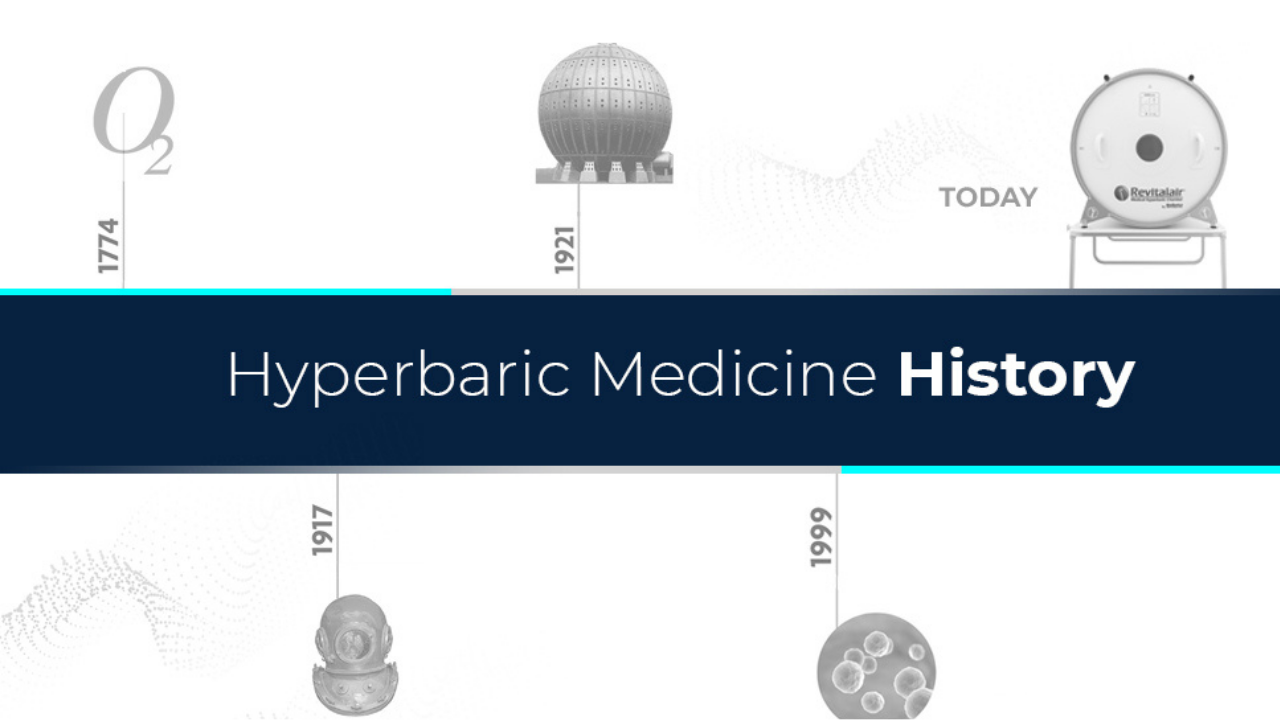October 15, 2020
4m 4s
Share:
Hyperbaric Medicine is a specialty that uses Hyperbaric Oxygen Therapy (HBOT) to obtain high partial pressures of oxygen by breathing pure oxygen inside a Hyperbaric Chamber at a pressure higher than atmospheric.
How did Hyperbaric Medicine emerge?
Hyperbaric Treatment was born more than 300 years ago. However, its formal application is more recent. In 1662 (before the discovery of Oxygen), the British clergyman Henshaw developed the first Hyperbaric Chamber, called the "domicilium".
“In times of good health, this ‘domicilium’ is proposed as a good resource to aid digestion, promote insensitive breathing, facilitate breathing, and the expulsion of sputum. Consequently, it is extremely useful in preventing most lung infections”, said Henshaw himself.
The clergyman intuited that increased air pressure could alleviate some acute injuries, while, according to him, low pressures could be useful in chronic pathologies. Today it is known that this Hyperbaric Chamber did not modify the pressure too much.
First uses of Hyperbaric Chambers
Henshaw's idea was quickly applied in different countries of Europe and between 1837 and 1877 there were opened the "Compressed Air Baths". In them, people breathed air, not oxygen. However, as the air pressure increased, the partial pressure of oxygen increased.
Subsequently, the French surgeon Fontaine built a hyperbaric operating room with wheels and pressurization at 2 ATM where he made anesthesia with nitrous oxide safer. According to his observations, the hernias were more easily reduced and the patients did not present cyanosis with the use of this intraoperative “compressed air”.
Unfortunately, the innovation did not produce much interest at the time and hyperbaric oxygenation had to wait almost two centuries to continue advancing. As early as the 20th century, the University of Kansas professor Orville J. Cunninghan used elevated partial pressures of oxygen to treat hypoxic states.
Cunninghan observed that patients with heart problems and circulatory issues who felt unwell in the mountains improved at sea level. For this reason, he considered that increasing the pressure could be beneficial for these people. This is how he built a hyperbaric chamber measuring 26.84 meters long and 3.05 in diameter and began to treat different diseases, most of them without any physiological fundamentals for that time.
In this Hyperbaric Chamber known as "The Tank", Cunninghan treated Henry Timken, a patient with kidney disease who, in gratitude, gave him a million and a half dollars to build the "Cunningham Sanitarium". This was the largest Hyperbaric Chamber in the world. The sphere stood at 64 feet and contained 38 rooms. It was pressurized up to 3 ATM.
Hyperbaric Oxygen Therapy
It was 1960 when a patient with gas gangrene was successfully treated in the Hyperbaric Chamber for the first time. In those years, some professionals used Hyperbaric Oxygenation to revitalize skin flaps in multiple traumas, complicated fractures, and frostbite cases.
The history of scientific Hyperbaric Medicine begins with two names: Paul Bert and John Scott Haddane. Bert concluded that pressure does not have a physical but a chemical effect, since it changes the proportion of oxygen in the blood. Through experiments with dogs, he found that breathing pure oxygen was beneficial in diver decompression sickness.
The modern scientific use of the hyperbaric chamber in medicine restarts with the work of Dr. Ite Boerema, a Dutch surgeon who considered surgery as "medical engineering". In 1956 he reported in Amsterdam the benefit of hyperbaric oxygen in cardiopulmonary surgery, particularly for congenital conditions such as tetralogy of Fallot, transposition of the great vessels, and pulmonary stenosis. Boerema is often recognized as the father of modern Hyperbaric Medicine.
In 1962, G. Smith and G.R. Sharp explained the enormous benefits of Hyperbaric Oxygen Therapy in carbon monoxide poisoning. There was international interest and Hyperbaric Medicine entered the modern era. Subsequently, hyperbaric chambers were built at Duke University, New York, Mount Sinai Hospital, Presbyterian Hospital, and Edgeworth Hospital in Chicago, Good Samaritan in Los Angeles, San Bernabé Hospital in New Jersey, Harvard Children's Hospital and St. Luke's, in Milwaukee.
Hyperbaric Medicine today
Currently, Hyperbaric Medicine has become a specialty with great evidence about its application in different pathologies around the world. There is a lot of development of Hyperbaric Medicine in Norway, France, England, Italy, Spain, Greece, Portugal, Finland, Germany, Austria, and other countries in Europe. In Latin America, the greatest development of Hyperbaric Oxygen has occurred in Cuba.
In recent years, different scientists have discovered that treatments at pressures less than 2 ATM are even more efficient for the treatment of neurological diseases. Researchers such as Efrati and Harch suggest that the oxygen dose should be as low as to maintain adequate glucose levels for neuronal function and that optimal effects on neuroplasticity can be achieved with treatment pressures as low as 1.3 to 1.5 ATM (less than 2 ATM).
This scientific evidence places Hyperbaric Oxygen Therapy in an emerging situation since it broadens the panorama to hyperbaric centers that use chambers that work at lower pressures, but are more accessible and distributed worldwide.
Sources:
Rodríguez Villa JL. La oxigenación hiperbárica. Recuerdo de Boerema. Medicina aeroespacial y ambiental. 1999; II (6)
Alessandro Maroni. The XIII Annual Chinese Symposium on Hyperbaric medicine. Oficial Newsletter. Foundation for the International Congress on Hyperbaric Medicine, 2004, 6 (2):6-6
Desola J. Bases y fundamento terapéutico de la Oxigenoterapia hiperbárica. Jano/Medicina, Vol.LIV, núm. 1260, 5-11 de junio 1998
http://www.bbc.co.uk/history/historic_figures/drebbel_cornelis.shtml
Evangelista Torricelli. Wikipedia, La encyclopedia libre.5 jun 2014. 2 feb 2014. http://es.wikipedia.org/wiki/Evangelista_Torricelli
Inventors and Inventions. New york. Marshall Cavendish Corporation. 2008. 6 feb 2014: http://books.google.co.ve/books?id=htV7fBG_fd0C&printsec=frontcover&hl=es
DAN. Diving Network.Durham. 2010.http://www.diversalertnetwork.org/about/history
K.K.Jain. The history of hperbaric Medicine”. Canada. Hogrefe & Huber Pulishers. 1990. Kindwall Eric and Whelan Harry. Hyperbaric Medicine. 2da. ed. USA. Best Publishing Company. 1999.
Matheu Daniel. Handbook of Hyperbaric Medicine. The Netherlands. Springer. 2006.
Undersea and hyperbaric Medical Society. Indications for Hyperbaric Oxygen Therapy. Disponible en: http://membership.uhms.org/default.asp?page=indications
Share:
Related
View cookie policy.


